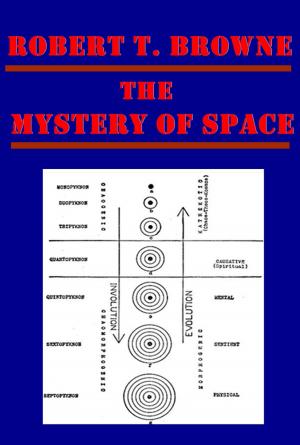Plane Geometry (The Illustrated Classic)
Nonfiction, Science & Nature, Mathematics, Vector Analysis, Geometry, Calculus| Author: | George Wentworth | ISBN: | 1230000146236 |
| Publisher: | Wentworth | Publication: | June 29, 2013 |
| Imprint: | Language: | English |
| Author: | George Wentworth |
| ISBN: | 1230000146236 |
| Publisher: | Wentworth |
| Publication: | June 29, 2013 |
| Imprint: | |
| Language: | English |
Plane Geometry By George Wentworth Contains Over 600 Exercises !!! Most persons do not possess, and do not easily acquire, the power of abstraction requisite for apprehending geometrical conceptions, and for keeping in mind the successive steps of a continuous argument. Hence, with a very large proportion of beginners in Geometry, it depends mainly upon the form in which the subject is presented whether they pursue the study with indifference, not to say aversion, or with increasing interest and pleasure. Great care, therefore, has been taken to make the pages attractive. The figures have been carefully drawn and placed in the middle of the page, so that they fall directly under the eye in immediate connection with the text; and in no case is it necessary to turn the page in reading a demonstration. Full, long-dashed, and short-dashed lines of the figures indicate given, resulting, and auxiliary lines, respectively. Bold-faced, italic, and roman type has been skillfully used to distinguish the hypothesis, the conclusion to be proved, and the proof. As a further concession to the beginner, the reason for each statement in the early proofs is printed in small italics, immediately following the statement. This prevents the necessity of interrupting the logical train of thought by turning to a previous section, and compels the learner to become familiar with a large number of geometrical truths by constantly seeing and repeating them. This help is gradually discarded, and the pupil is left to depend upon the knowledge already acquired or to find the reason for a step by turning to the given reference. It must not be inferred, because this is not geometry of interrogation points, that the author has lost sight of the real object of the study. The training to be obtained from carefully following the logical steps of a complete proof has been provided for by the Propositions of the Geometry, and the development of the power to grasp and prove new truths has been provided for by original exercises. The chief value of any Geometry consists in the happy combination of these two kinds of training. The exercises have been arranged according to the test of experience, and are so abundant that it is not expected that any one class will work them all out. The methods of attacking and proving original theorems are fully explained in the first Book, and illustrated by sufficient examples; and the methods of attacking and solving original problems are explained in the second Book, and illustrated by examples worked out in full. None but the very simplest exercises are inserted until the student has become familiar with geometrical methods, and is furnished with elementary but much needed instruction in the art of handling original propositions; and he is assisted by diagrams and hints as long as these helps are necessary to develop his mental powers sufficiently to enable him to carry on the work by himself. The laws of converse theorems, the distinction between positive and negative quantities, and the principles of reciprocity and continuity have been briefly explained; but the application of these principles is left mainly to the discretion of teachers. G. A. WENTWORTH.
Plane Geometry By George Wentworth Contains Over 600 Exercises !!! Most persons do not possess, and do not easily acquire, the power of abstraction requisite for apprehending geometrical conceptions, and for keeping in mind the successive steps of a continuous argument. Hence, with a very large proportion of beginners in Geometry, it depends mainly upon the form in which the subject is presented whether they pursue the study with indifference, not to say aversion, or with increasing interest and pleasure. Great care, therefore, has been taken to make the pages attractive. The figures have been carefully drawn and placed in the middle of the page, so that they fall directly under the eye in immediate connection with the text; and in no case is it necessary to turn the page in reading a demonstration. Full, long-dashed, and short-dashed lines of the figures indicate given, resulting, and auxiliary lines, respectively. Bold-faced, italic, and roman type has been skillfully used to distinguish the hypothesis, the conclusion to be proved, and the proof. As a further concession to the beginner, the reason for each statement in the early proofs is printed in small italics, immediately following the statement. This prevents the necessity of interrupting the logical train of thought by turning to a previous section, and compels the learner to become familiar with a large number of geometrical truths by constantly seeing and repeating them. This help is gradually discarded, and the pupil is left to depend upon the knowledge already acquired or to find the reason for a step by turning to the given reference. It must not be inferred, because this is not geometry of interrogation points, that the author has lost sight of the real object of the study. The training to be obtained from carefully following the logical steps of a complete proof has been provided for by the Propositions of the Geometry, and the development of the power to grasp and prove new truths has been provided for by original exercises. The chief value of any Geometry consists in the happy combination of these two kinds of training. The exercises have been arranged according to the test of experience, and are so abundant that it is not expected that any one class will work them all out. The methods of attacking and proving original theorems are fully explained in the first Book, and illustrated by sufficient examples; and the methods of attacking and solving original problems are explained in the second Book, and illustrated by examples worked out in full. None but the very simplest exercises are inserted until the student has become familiar with geometrical methods, and is furnished with elementary but much needed instruction in the art of handling original propositions; and he is assisted by diagrams and hints as long as these helps are necessary to develop his mental powers sufficiently to enable him to carry on the work by himself. The laws of converse theorems, the distinction between positive and negative quantities, and the principles of reciprocity and continuity have been briefly explained; but the application of these principles is left mainly to the discretion of teachers. G. A. WENTWORTH.















